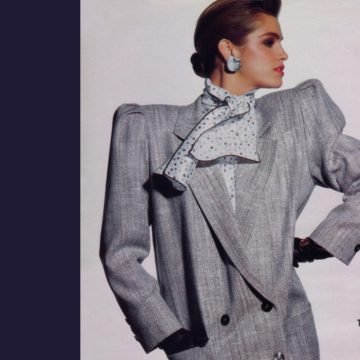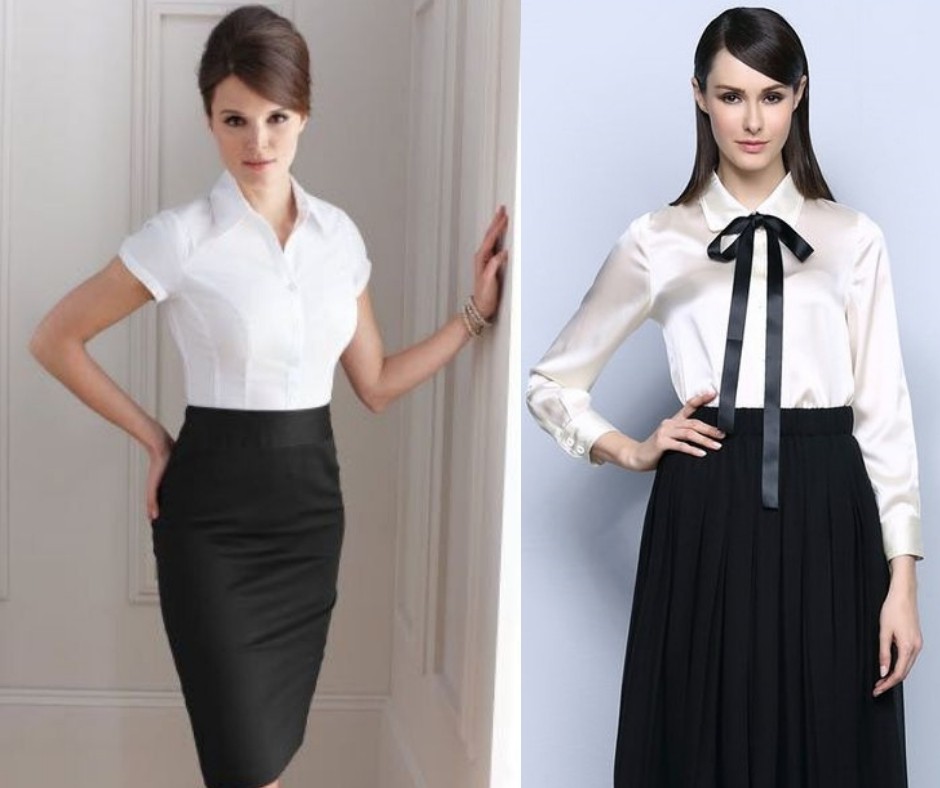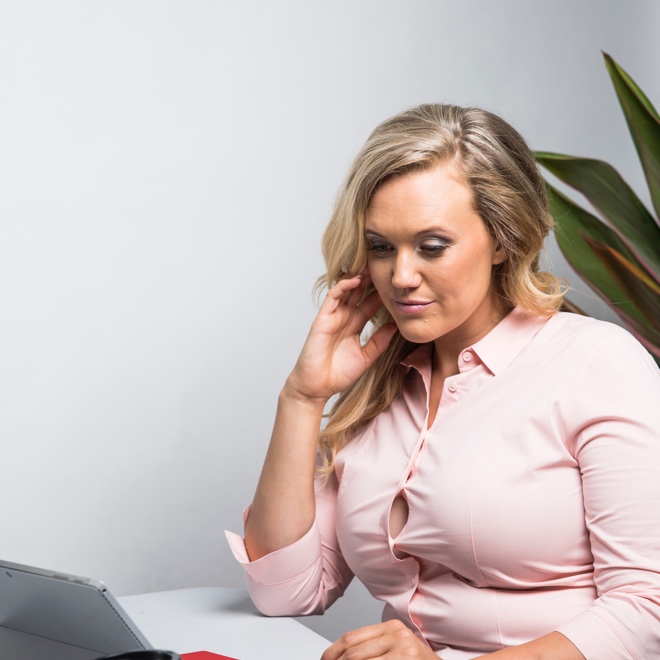Close your eyes for a second. Imagine there are two women standing beside each other. The first is wearing a black skirt to the knee, a flowing white blouse, and she has her hair held back. The other woman is wearing the same skirt to the knee, a fitted white shirt, with her hair tied back. One of these women is the boss, and the other is her assistant. Which is which?
The difference between my two fictitious ladies was the blouse versus the shirt. Does one create a different impression than the other? Or are they inherently synonymous with each other?
You will have given an answer, even if just to yourself. No matter what the answer, you have deduced that one woman takes one role, and the other takes the other based purely upon their attire. And, if you are honest with yourself, I am also reasonably confident that your boss lady wasn’t the former. Of course, I also used a little subliminal messaging, which, as a mother, wife and sister, I have a black belt in. The blog title somewhat gave the game away, that the flowing blouse has traditionally often stood behind the might of the fitted shirt when it comes to power.
Why the difference? What is a blouse anyway? When I first thought about it, for me it is an older person’s shirt. Something my mother-in-law would wear. And yet, the word blouse is one of the most frequently searched with over 100k hits on Google each month. And that for sure is not my mother-in-law. So, when is a shirt a shirt, and a blouse a blouse?
According to the Oxford English Dictionary, a blouse is a woman’s upper garment resembling a shirt, typically with a collar, buttons and sleeves… a loose linen or cotton garment. A shirt on the other had is defined as a garment for the upper body made of cotton or a similar fabric, with a collar and sleeves, and with buttons down the front.
So, a blouse is a looser item, generally meaning it is more comfortable. When I think blouse, I think chiffon, or silk. Whereas a shirt conjures up cotton and starch. Whilst both items of clothing are versatile, and can be worn in multiple guises, a shirt can be dressed up with different accompaniments, whereas a blouse is often used to do the dressing up of an outfit. So, if this is true, do both shirts and blouses actually have a place in our wardrobes, regardless of our age?
A NY Times article recently reported that the Autumn and Winter of 2018 in the Northern Hemisphere would see the resurgence of some iconic 1980s styling, with a hint of cheeky irreverence on the side. Vogue reiterated this and included early 90s looks as well. Seasonal trends are generally repeated two seasons later in the Southern Hemisphere, so it sounds like we can look forward to a winter of 1980s largesse. So, do these looks lend themselves more to the blouse or shirt?
In the 1980s, females in the corporate world were often trying to balance remaining feminine, with exuding power to emulate their male counterparts. The veritable, having the cake and eating it too look. Women borrowed themes from the natural world, where the biggest member is given pride of place, with all other members bowing to their authority. Shoulder pads got bigger and bigger, only balanced out by the exceedingly voluminous hair. At no other time have hairspray companies been such a sure-fire investment. Not to mention the female trouser suit, with any femininity of form being lost inside the wide-leg trousered, shoulder-padded badness. But underneath all that shoulder pad and hair, woman often wore the traditional blouse, to promote the femininity. So should we expect to see more of the same?
The veritable, having the cake and eating it too look. Women borrowed themes from the natural world, where the biggest member is given pride of place, with all other members bowing to their authority. Shoulder pads got bigger and bigger, only balanced out by the exceedingly voluminous hair. At no other time have hairspray companies been such a sure-fire investment. Not to mention the female trouser suit, with any femininity of form being lost inside the wide-leg trousered, shoulder-padded badness. But underneath all that shoulder pad and hair, woman often wore the traditional blouse, to promote the femininity. So should we expect to see more of the same?
Balenciaga’s Fall collection certainly has elements of the ruffle in the blouse. However, the reduction, or removal, of shoulder-pad scaffolding has meant that the blouse now doesn’t have to tone down the masculinity, and instead is a lot more structured itself. Indeed, it seems to be a hybrid, a blirt or a shouse, if you will (look at me, I just created 2 new words). With the increased numbers of women in the workplace, and the somewhat reduction in the need to prove oneself in a male-dominated environment, it seems, certainly from a fashion perspective, women are ok to be women in the new 1980s.
There also seems to be less apologies from the fashion designers themselves. Rather than discussing whether something was encompassing the view of femininity, Sarah Burton for Alexander McQueen famously retorted “I just thought, why not? F?!K it… we’re in fashion”. What honesty. Love it.
There is also a nod to the 1990s with animal print and leather to provide strength, rather than the towering shoulder pads. In material terms, tweed is also going to make a bit of a comeback. All in all, its quite a tailored look.
The other major change seems to be the removal of the buttoned up double-breasted jacket. I can’t say I am sad about this, given that double-breasted clothing on top of what God gave me, is, to put it delicately, more than a handful. What this lack of jacket buttoning means though is that there is less of an opportunity to hide any shirt gape issues behind the jacket. With the growth in more structured forms, the potential for the gaping shirt or gaping blouse, or dare I say it, the gaping shouse (!), is much higher. We have you covered for that though. Aren’t we awesome!
So, as we get closer and closer to heading into the 20s (the 2020s, gulp!), a beautifully fitted shirt can certainly exude a sense of style and confidence, and with blouses becoming more structured and fitted, so too can, and will, the beautiful blouse. Wear either, wear both, and wear them well, without a gape.
Till next time,
Stop The Gape



